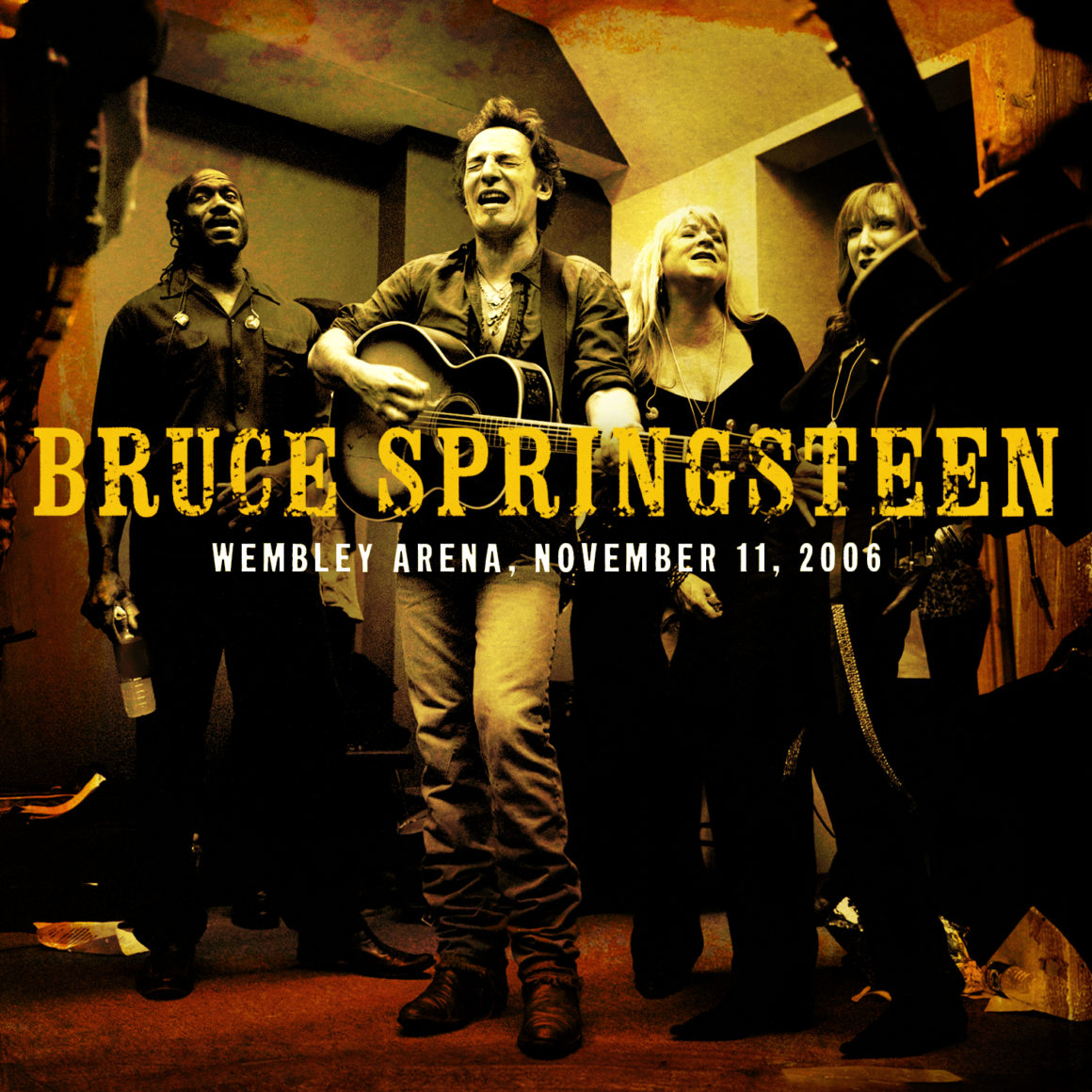
Bruce Springsteen and The Sessions Band
Wembley Arena, London, England
By Erik Flannigan
How should we view the Seeger Sessions tour in the context of Bruce Springsteen’s storied performance history? Incredibly, 14 years have already passed since the arrival of the album We Shall Overcome: The Seeger Sessions and the tour that followed. That’s roughly the same amount of time as between Bruce’s early 1970 Steel Mill audition for Bill Graham in San Francisco and the release of Born in the U.S.A. (Join me in an unspoken but no less mortified “Yikes!”)
Springsteen’s foray into traditional music is named in homage to legendary folk-music activist Pete Seeger, with whom he had a fond relationship. Bruce was on tour in South Africa when Seeger passed in 2014 at the age of 94. “I lost a great friend and hero last night,” Bruce told the crowd. “We’re humbled to be here tonight in the land of Mandela, a great freedom fighter. We are here tonight in his grace, because he made it possible for us to be here. Pete, back home, was a very courageous freedom fighter also.”
We Shall Overcome surveys the kind of American folk standards popularized by Seeger. The project’s musical approach is often full-on hootenanny, with Bruce backed by a large, loose ensemble of musicians playing with instinct, spontaneity, and just the right amount of reverence. The Sessions Band tour followed a similar blueprint, expanding song selections to include additional folk and roots classics, as well as Springsteen originals re-arranged in kindred styles.
Whether you love folk music or merely appreciate its importance and influence, Bruce’s live performances of that music with this band were undeniably infectious and entertaining. Part of that was down to the man himself seeming as happy as he had ever been on stage, energized by painting with a completely different palette, performing with new companions and a few friendly faces.
The Seeger Sessions album and tour happened in the midst of a fruitful period for Bruce, who released and toured behind Devils & Dust the year before, and would issue and tour in support of Magic a year later and beyond, followed quickly by the same game plan for Working on a Dream. It was an impressive flurry of activity, and because Seeger Sessions was a one-off, perhaps it hasn’t received a deserved reappreciation.
We know it remains near and dear to Bruce. Earlier this year he blessed the YouTube release of the entire New Orleans Jazz & Heritage Festival performance from April 2006, the first show of the Seeger Sessions tour and one Springsteen cites in this autobiography as among his most meaningful shows ever.
Jazz Fest was also released in the Archive series, providing a fine document of the tour’s early stages. The official Live in Dublin culls highlights from three shows at the end of the tour. To those bookends we add London 11/11/06, which offers the first complete performance from the end of the Seeger run and includes a number of setlist variations to New Orleans and Dublin.
We commence with a show-opening throwback to Bruce’s first single, “Blinded By the Light.” When Greetings From Asbury Park, N.J. was released in early 1973, more than a few critics characterized it as folk rock, making its inclusion here all the more fitting. That being said, while I’m no musicologist, the style in which it is performed here suggests File Under Klezmer.
The first half of the London show offers a satisfying mix of high-spirited songs from the album (“Old Man Tucker,” “Jesse James,” “Mrs. McGrath”), some of its weightier material (“Eyes on the Prize,” “Erie Canal,” “O Mary Don’t You Weep”) and Seegerized, story-rich Springsteen originals.
To wit: “Atlantic City” is transformed into a murder ballad rave-up; “Growin’ Up” is appealingly re-arranged with country flourishes and a bit of Dylan influence, too; and “Open All Night” gets something of a juke-joint makeover. The new arrangements cast all three in fresh light that expands our appreciation for each song. “Devils & Dust (which does not appear on the New Orleans or Dublin releases) hues closer to the original arrangement, but it draws upon the chorus of voices in the Sessions band, led by Curtis King and Soozie Tyrell, yielding a beautiful and poignant result.
Late in the show, Springsteen thanks the crowd for “taking a chance on [our] experiment here,” his characterization of the entire Seeger Sessions project. On this night he took that spirit one step further by debuting a brand new song.
The night before his first London show, Springsteen went to see Lucinda Williams play at Shepherd’s Bush Empire, joining her on stage for two songs. Inspired by her performance of unreleased material, the next night Bruce pulls out one of his own work-in-progress originals, introduced as “Gonna Be a Long Walk Home.”
“She was brave because she played all these new songs,” Springsteen tells the Wembley audience. “Between my whoring and drinking, when I come home after that, I sit up in the hotel room occasionally and I try to write.”
The premiere of “Long Walk Home,” a one-off on the 2006 tour, features a number of lyric variations and extra lines compared to the version eventually released on Magic a year later. The final verse of this unique performance includes a sober couplet on the state of America that feels even more relevant today: “Now the water’s rising ’round the corner, there’s a fire burning out of control / There’s a hurricane on Main Street and I’ve got murder in my soul.”
That kind of risk-taking and the enthusiasm for reinterpreting one’s own work are hallmarks of the Seeger Sessions tour, as is the pure, unbridled joy of the performances. London 11/11/06 captures those qualities marvelously.